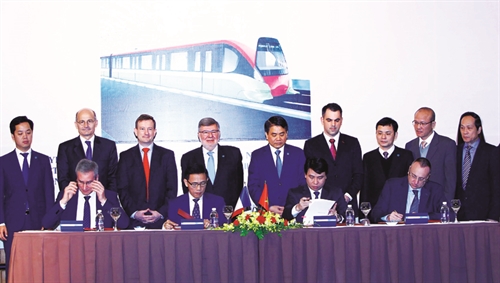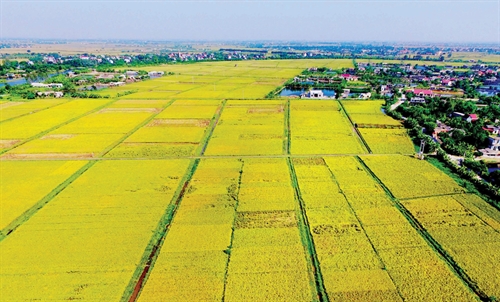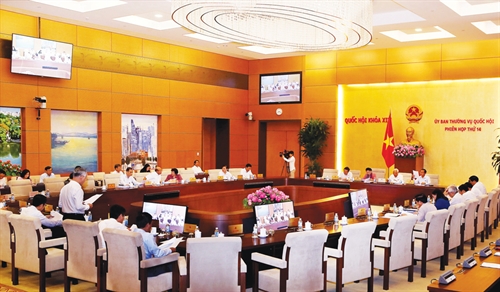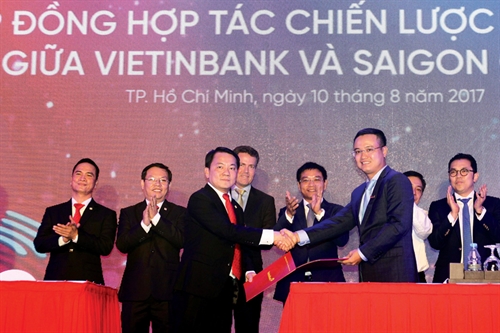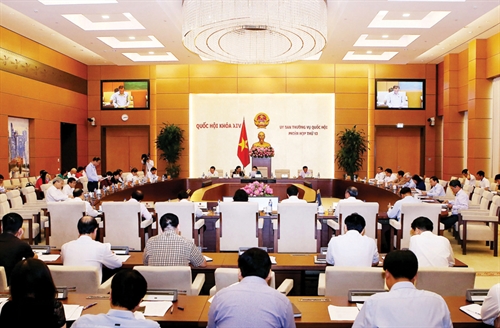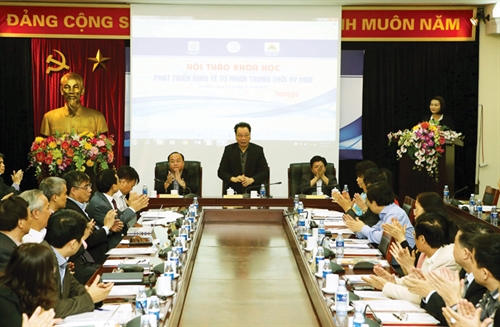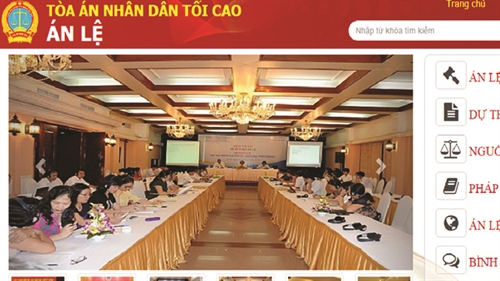The term “local administration” has been widely used in Party documents, politico-legal books and journals as well as speeches of Party and State leaders but it still needs an official definition in current legal documents. Before it is officially used in the 2013 Constitution and the 2015 Law on Organization of Local Administration, the term appeared once sixty years ago in the 1958 Law on Organization of Local Administration.
According to most Vietnamese state administration scholars, local administration is an apparatus exercising state power at provincial, district and commune levels; a local administration consists of a People’s Council and a People’s Committee. It is a complicated system because of not only the complexity of administrative-territorial structures but also its diverse operations under different historical conditions and within different scopes of competence.
At present, Vietnam’s local administrations consisting of People’s Councils and People’s Committees are established in 63 provincial-level administrative units (58 provinces and 5 centrally run cities), 713 district-level ones (546 rural districts, 49 urban districts, 51 towns and 67 provincial cities), and 11,162 commune-level ones (8,978 communes, 1,581 wards and 603 townships). Local administrations do not include local people’s courts and people’s procuracies. They manage all areas of social life in localities on the principle of democratic centralism and harmonious combination of interests of local people and common interests of the whole country.
The 2013 Constitution uses the term “local administration” as the title of a chapter with seven articles on this issue (Articles 110 thru 116). On June 19, 2015, the 13th National Assembly adopted the Law on Organization of Local Administration (the Law). With effect from January 1, 2016, the Law concretizes the provisions of the 2013 Constitution and the Party’s policies and guidelines on building efficient local administrations in the cause of national renewal.
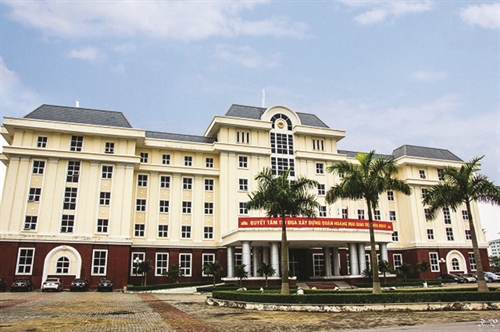 |
| Office of the People’s Committee of Hoang Mai district, Hanoi__Photo: Internet |
Levels of administrative units
Under Article 110 of the 2013 Constitution, Vietnam’s administrative units are divided as follows:
“The country shall be divided into provinces and centrally run cities; a province shall be divided into rural districts, towns and provincial cities; a centrally run city shall be divided into urban districts, rural districts, towns and equivalent administrative units; a rural district shall be divided into communes and townships; a town or provincial city shall be divided into wards and communes; and an urban district shall be divided into wards. Special administrative-economic units may be established by the National Assembly. The establishment, dissolution, consolidation, separation or adjustment of the boundaries of an administrative unit shall be consulted with local people and must comply with the process and procedures prescribed by a law.”
Accordingly, Vietnam’s local administration is organized at three levels, provincial, district and commune. In addition, special administrative-economic units may be established by the National Assembly to meet the country’s socio-economic development requirements. These units may have a special governance apparatus suitable to their own geographical conditions and space and different from that of traditional administrative units.
The Law just lays down principles for the organization of local administrations in special administrative-economic units, while leaving the National Assembly to decide on the organizational structure, tasks and powers of People’s Councils and People’s Committees in these units upon their establishment.
The 2013 Constitution states that the establishment, dissolution, consolidation, division or adjustment of administrative boundaries of administrative units must be consulted with local people according to certain procedures. This consultation, though for reference purpose only, is a big step forward in the organization of local administration in Vietnam, serving as a basis for competent authorities to come up with well-informed decisions.
Article 3 of the Law contains specific provisions on the classification of administrative units. Accordingly, the classification must be based on population size, natural area, number of attached administrative units, level of socio-economic development and specific features of each type of administrative unit, rural, urban or island. The classification serves as a basis for making socio-economic development policies, designing the apparatus and policies toward local administration staffs suitable to each administrative unit. To concretize this issue, on May 25, 2016, the National Assembly Standing Committee issued Resolution 121 on criteria and classification of administrative units.
Organization of local administration
Article 111 of the 2013 Constitution stipulates: “Local administrations shall be organized in administrative units of the Socialist Republic of Vietnam. Each local administration level shall be composed of the People’s Council and People’s Committee to be organized in conformity with characteristics of rural areas, urban areas, islands or special administrative-economic units prescribed by a law.”
The above provisions see a new content that they do not impose a single model for the local administration to be organized after in the whole country. They imply that a local administration must be organized in every administrative unit but not in the same manner in all administrative units.
However, the Law maintains that the two types of bodies, namely People’s Council and People’s Committee, must be established in every administrative unit. Article 4.1 of the Law states: “The local administration level consisting of the People’s Council and People’s Committee shall be organized in every administrative unit of the Socialist Republic of Vietnam prescribed in Article 2 of this Law.”
Tasks and powers of local administration
The 2013 Constitution clearly states that the local administration has two types of tasks and powers, namely organizing and ensuring implementation of the Constitution and laws in their localities and deciding on local issues. This expresses the underpinning view that policies and laws are to be issued by competent central bodies, while local administrations at all levels are responsible for organizing the implementation under the supervision by superior state bodies. In addition, tasks and powers of local administration are determined based on the division of competence between state bodies at central and local levels and among different levels of local administration. This determination is aimed at guaranteeing the initiative and self-responsibility of each level of administration as well as the effective control of power.
Therefore, the Law defines specific tasks and powers of each level of local administration as well as those of the People’s Councils and People’s Committees in the administrative units in order to clearly express the close association of these two bodies. The Law concentrates tasks and powers of local administrations at the provincial level and assigns fewer tasks and powers to the district and commune levels, taking into account the capability of each level of administration.
Position, structure and operations of People’s Councils
Article 113 of the 2013 Constitution states:
“1. The People’s Council is the local state power body, representing the will, aspirations and right to mastery of the local people, shall be elected by the local people, and is responsible to the local people and state agencies at higher levels.
2. The People’s Council shall decide on local issues as prescribed by a law; and supervise the observance of the Constitution and laws in its locality and the implementation of its own resolutions.”
Article 6 of the Law states: “A People’s Council shall be composed of deputies elected by local voters, is the state power body in the locality, and shall represent the will, aspirations and the right to mastery of the people, and shall take responsibility before the local people and state bodies at higher levels.”
So, the 2013 Constitution and the Law both affirm the important position of the People’s Council in the local state apparatus.
Compared to the 2003 Law on Organization of People’s Councils and People’s Committees, the Law contains new, specific provisions on the organization and operation of People’s Councils, their sessions, standing members, specialized departments and deputies.
Under the Law, People’s Council deputies’ groups may be formed at provincial- and district-level People’s Councils, but not at commune-level People’s Councils. People’s Councils may elect, relieve of duty and dismiss holders of positions in their organization in accordance with law; may elect and relieve of duty holders of titles in the People’s Committees; and elect, relieve of duty and dismiss people’s assessors in the same-level People’s Courts.
People’s Council deputies work as representatives for the will and aspirations of local people and take responsibility before local voters and their People’s Councils for the performance of their tasks and powers. People’s Council deputies are equal in discussing and deciding on issues within the scope of tasks and powers of the People’s Councils.
In addition, the Law adjusts the number of People’s Council deputies to ensure their representativeness (increasing the numbers of People’s Council deputies in Hanoi and Ho Chi Minh City to 105 from 95). Concerning full-time deputies, the Law stipulates that chairpersons of provincial- and district-level People’s Councils and heads of their specialized departments may work on a full-time or part-time basis, but their deputies must be full-timers; vice chairpersons of commune-level People’s Councils must work on a full-time basis while heads, deputy heads and members of their sections are part-timers.
As per the Law, the standing body of a People’s Council has tasks and powers as prescribed by law and take responsibility for and report on their work to the People’s Council. Its members must not concurrently be members of the People’s Committee of the same level.
To raise the role of the standing body of the People’s Council, the Law stipulates that it must operate regularly at the interval of two People’s Council sessions, and meet once a month. The standing member of the standing body of the provincial- or district-level People’s Council is a vice chairperson of the People’s Council. The standing body of the provincial- or district-level People’s Council is expanded to include the People’s Council’s chairperson, vice chairpersons and members who are heads of the People’s Council’s departments. The commune-level People’s Council’s standing body consists of only the People’s Council chairperson and vice chairpersons.
Specialized departments of a People’s Council have the tasks of verifying draft resolutions, reports and schemes before they are submitted to the People’s Council, supervising and making recommendations concerning issues under their charge, and reporting their work to the People’s Council. Under the Law, the People’s Council of a centrally run city may additionally organize a department for urban affairs, while a commune-level People’s Council may set up two more sections in charge of legal affairs and socio-economic affairs. Heads of departments of provincial- and district-level People’s Councils may work on a full-time or part-time basis, while their deputies must be full-timers. Members of divisions of commune-level People’s Councils work on a part-time basis.
 |
| Carrying out administrative formalities at a public office in Ngo Quyen district, Hai Phong__Photo: Lam Khanh/VNA |
Position, structure and operations of People’s Committees
Article 114 of the 2013 Constitution states:
“1. The People’s Committee at a local administration level, which shall be elected by the People’s Council of the same level, is the executive body of the respective People’s Council and is the local state administrative body, and is responsible to the People’s Council and state administrative agencies at higher levels.
2. The People’s Committee shall organize implementation of the Constitution and laws in its locality and implementation of the resolutions of the People’s Council, and perform the tasks assigned to it by state agencies at higher levels.”
The Law contains specific provisions on the number and membership, operation principles and meetings of People’s Committees; work and responsibilities of People’s Committee members; and specialized bodies of People’s Committees.
According to Article 8 of the Law, a People’s Committee is composed of the chairperson, vice chairpersons and members. A provincial- or district-level People’s Committee is composed of the chairperson, vice chairpersons, members who are heads of specialized bodies of the People’s Committee, a member in charge of military affairs and a member in charge of public security. A commune-level People’s Committee is composed of the chairperson, vice chairpersons and a member in charge of military affairs and a member in charge of public security. The specific number of vice chairpersons of a People’s Committee is decided by the Government based on the classification of administrative units. According to Government Decree 08/2016/ND-CP dated January 25, 2016, Hanoi and Ho Chi Minh Municipal People’s Committees may have no more than five vice chairpersons; the People’s Committees of other centrally run cities and grade-I provinces may have no more than four vice chairpersons, and the People’s Committees of grade-II and grade-III provinces may have no more than three vice chairpersons. The People’s Committees of grade-I districts may have no more than three vice chairpersons and the People’s Committees of grade-II and grade-III districts may have no more than two chairpersons. The maximum number of vice chairpersons of the People’s Committee of a grade-I commune is two; the People’s Committee of a grade-II or grade-III commune may have only one vice chairperson.
The People’s Committee operates on a collegial basis combined with the responsibility of its chairperson. As head of the People’s Committee, the chairperson is responsible for leading and directing the performance of the tasks of implementation of the Constitution and laws, documents of superior state agencies, of the People’s Council and of its own, and leading and taking the responsibility for the operation of the state administrative system in the locality.
The Law also specifies the number and structure of members of a People’s Committee, saying that heads of its specialized bodies are members of the People’s Committee. It also clearly defines the competence and responsibility of the People’s Committee and its chairperson, attaching importance to the responsibility of the latter.
People’s Committees at provincial and district levels may organize specialized bodies to give advice to and assist the People’s Committees in performing the state management in the locality and perform tasks and powers as decentralized or authorized by superior state agencies. These specialized bodies submit to the direction and management by the People’s Committee in terms of their organization, payroll and work and to the professional direction and examination by superior state agencies in charge of relevant fields or sectors. Their establishment and abolition are decided by the same-level People’s Council. The organization of specialized bodies of People’s Committees must suit the rural, urban or island characteristics of the locality and its socio-economic conditions and development level, and avoid overlap with the tasks and powers of superior state agencies based in the locality.
Division of competence
The 2013 Constitution officially stipulates the division of competence between the central government and local administration, creating an important legal prerequisite for the law on local administration to specify the competence, tasks and powers of each level of local administration. This division aims to ensure the unified direction of the central government while promoting the creativity, autonomy and self-responsibility of local administration.
Article 112.2 of the 2013 Constitution states: “The tasks and powers of local administrations shall be determined on the basis of dividing the powers between state agencies at the central and local levels and for each level of local administration.”
Article 112.3 of the 2013 Constitution further states: “Local administrations may, as necessary, be assigned certain tasks of superior state agencies, along with the necessary conditions for the performance of those tasks.”
The Law has specific provisions on the principles of division of competence (Article 11), assignment of powers to the local administration (Article 12), decentralization of powers to the local administration (Article 13), and authorization of state administrative agencies in localities (Article 14).
The 2013 Constitution and the Law have introduced many changes to the local administration system. However, in order to achieve the goal of building a socialist law-ruled state, Vietnam needs bolder solutions to further reform the organization and operation of its local administration. These solutions include establishing regional administrations; enacting a law on decentralization; re-determining the position of People’s Councils as local self-governing bodies representing the local people; establishing the single-boss working regime of People’s Committees; and increasing standards of provincial-level People’s Council deputies.-
